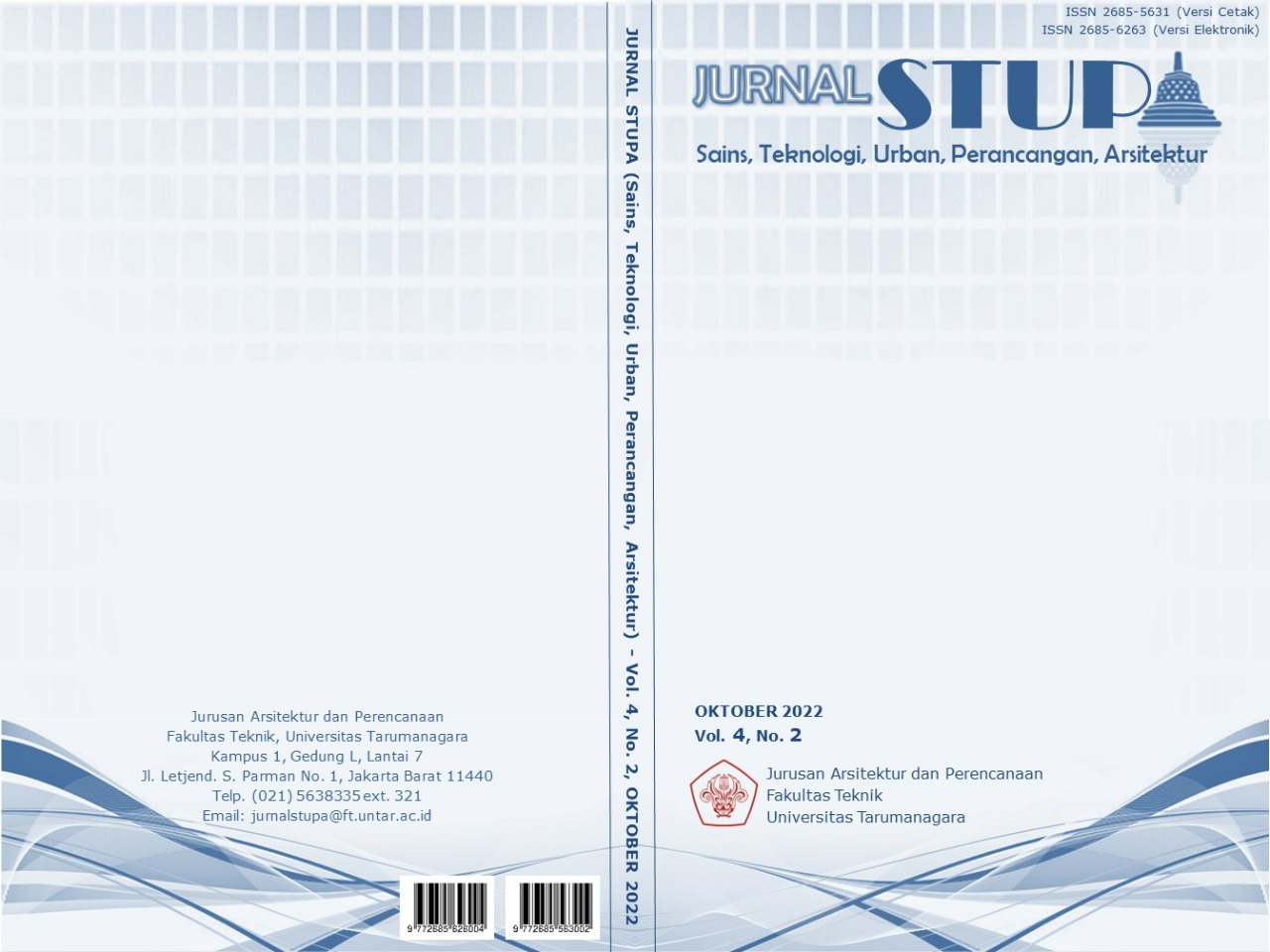MENGEMBALIKAN POPULARITAS BLOK M SEBAGAI AREA BERKUMPUL PEMUDA JAKARTA MELALUI MENGGUNAKAN METODE PENYUNTIKAN URBAN ACUPUNCTURE
Isi Artikel Utama
Abstrak
Kebayoran Baru is a sub-district in the south of Jakarta with a bit of history that has colored the journey of the capital city of Jakarta. In the 80s and 90s, the Kebayoran Baru area, which was centered on Blok M, was filled with Japanese expatriates, which made the Blok M area, especially Melawai, popular among young people as a gathering area to create the term 'Lintas Melawai'. Visualization of the Blok M area as an elite area where 'Lintas Melawai' is a place to show off vehicles, gradually decreasing or degrading, which is quite influenced by MRT infrastructure development. Locations that are increasingly difficult to reach and the presence of other magnets in other areas that are more attractive have made the economic condition of the community decline along with the social and physical conditions of the area. One of the efforts that can be done to save the area is by injecting Urban Acupuncture and applying the spatial narrative method so that the area no longer experiences a decline but returns to the image of an area full of Jakarta's youth, where this will have a positive impact on the economy and regional potential. even to human resources in the region. The revitalization and re-programming actions taken are expected to be able to bring the area to grow in tandem with the acceleration of the growth of existing infrastructure, so that the area is no longer left behind but adapts according to the times without forgetting the historical values that have been attached to the community's memory.
Keywords: Blok M Recreation; Education; Hangout Place; Urban Acupuncture
Abstrak
Kebayoran Baru merupakan sebuah kecamatan yang berada di selatan Jakarta dengan sekelumit sejarah yang mewarnai perjalanan Ibukota Kota Jakarta. Di era 80 hingga 90an, kawasan Kebayoran Baru yang berpusat pada Blok M di penuhi oleh eskpatriat Jepang dimana hal ini menjadikan kawasan Blok M khususnya Melawai popular di kalangan anak muda sebagai area berkumpul hingga tercipta sebutan ‘Lintas Melawai’. Visualisasi Kawasan Blok M sebagai kawasan elit dimana ‘Lintas Melawai’ merupakan tempat untuk memamerkan kendaraan, lambat laun mengalami penurunan atau degradasi, yang cukup di pengaruhi oleh pembangunan infrastruktur MRT. Lokasi yang semakin sulit di capai serta adanya magnet kawasan lain yang lebih menarik, membuat kondisi perekonomian masyarakat menurun bersamaan dengan kondisi sosial juga fisik kawasan. Salah satu upaya yang dapat dilakukan untuk menyelamatkan kawasan yakni dengan melakukan penyuntikan Urban Acupuncture serta penerapan metode spatial narative sehingga kawasan tidak lagi mengalami penurunan tetapi kembali menjadi citra kawasan yang penuh dengan pemuda Jakarta, dimana hal ini akan memberikan dampak yang positif terhadap perekonomian serta potensi daerah bahkan sampai sumber daya manusia di kawasan tersebut. Tindakan revitalisasi dan re-programming yang dilakukan diharapkan dapat membawa kawasan untuk bertumbuh beriringan dengan percepatan pertumbuhan infrastruktur yang ada, sehingga kawasan tidak lagi tertinggal tetapi beradaptasi sesuai dengan perkembangan zaman tanpa melupakan nilai sejarah yang sudah melekat pada memori masyarakat.
Rincian Artikel

Artikel ini berlisensiCreative Commons Attribution-NonCommercial-ShareAlike 4.0 International License.
This work is licensed under a Jurnal Sains, Teknologi, Urban, Perancangan, Arsitektur/ STUPA Creative Commons Attribution-NonCommercial-ShareAlike 4.0 International LicenseReferensi
Ambrose, T., & Paine, C. (2006). Museum Basics, Second Edition. London dan New York: Routledge.
Catanese, A., & Snyder, J. (1984). Pengantar Arsitektur. Ir. Hendro Sangkayo, penerjemah. Jakarta: Erlangga.
Darmawan, E. (2007). Peranan Ruang Publik dalam Perancangan Kota (Urban Design). Semarang: Badan Penerbit Universitas Diponegoro.
Hamruni. (2009). Strategi dan Model-model Pembelajaran Aktif Menyenangkan. Yogyakarta: Fakultas Tarbiyah UIN Sunan Kalijaga.
Haryadi, S. B. (2010). Arsitektur, Lingkungan dan Perilaku. Yogyakarta: Gadjah Mada University Press.
Klein, N. M. (2004). The Vatican to Vegas: The History of Special Effect. New York: New Press.
Lang, J. (1987). Creating Architectural Theory. New York: Van Nostrand Reinhold Company.
Nash, J. B. (2009). Pengertian Rekreasi dan Jenis Rekreasi. http://www.pengertianahli.com/2014/03/pengertian-rekreasi-dan-jenisrekreasi.html.
Suyadi. (2010). Psikologi Belajar Anak Usia Dini. Yogyakarta: PEDAGOGIA.



